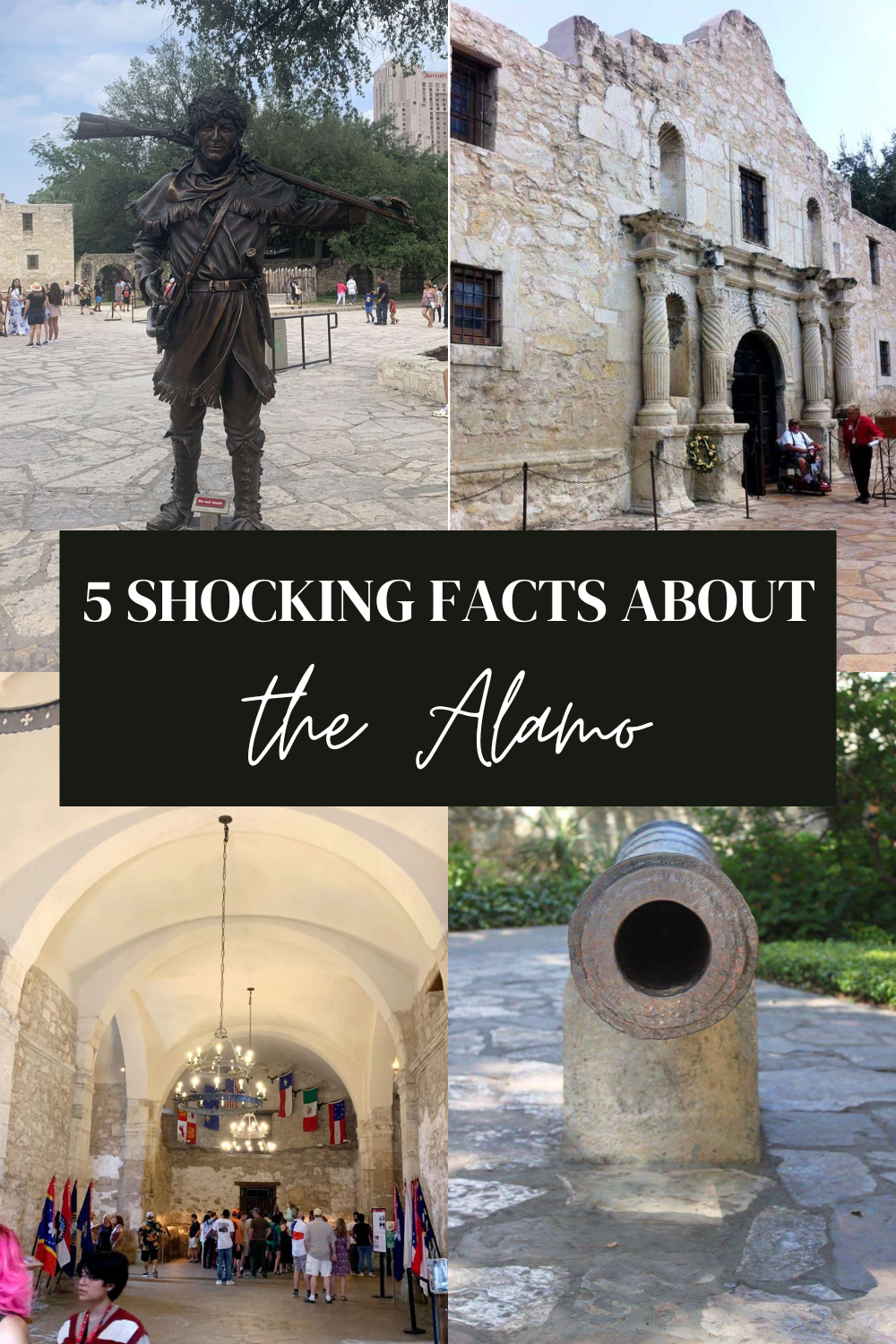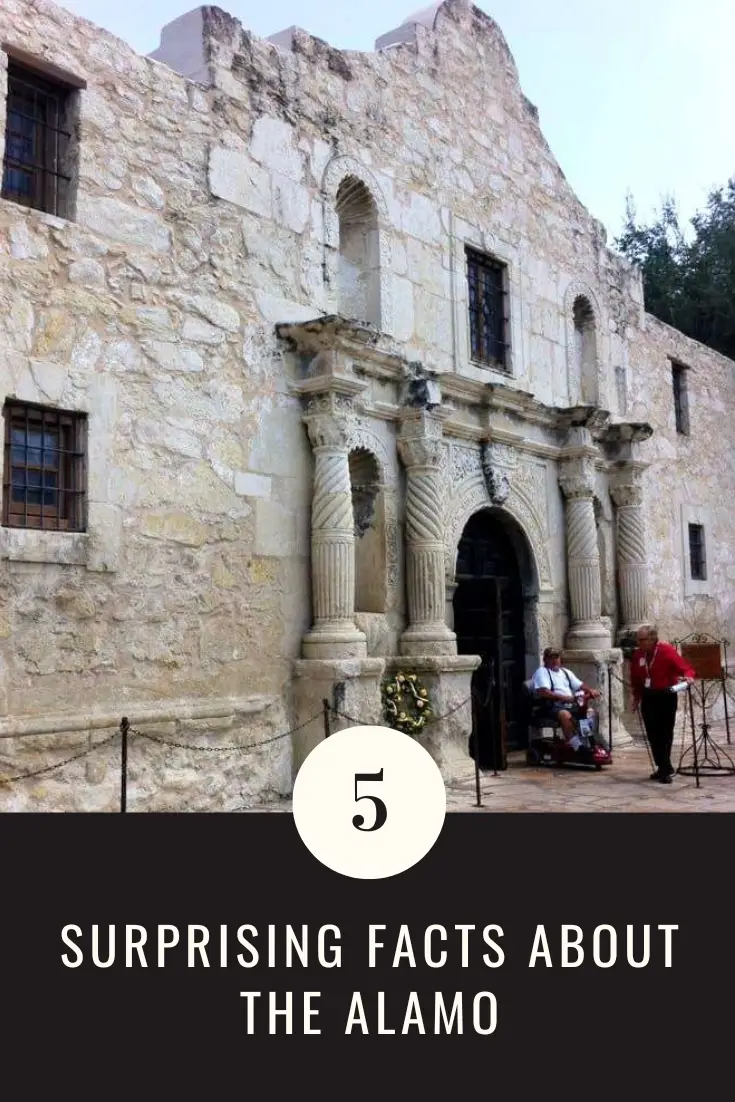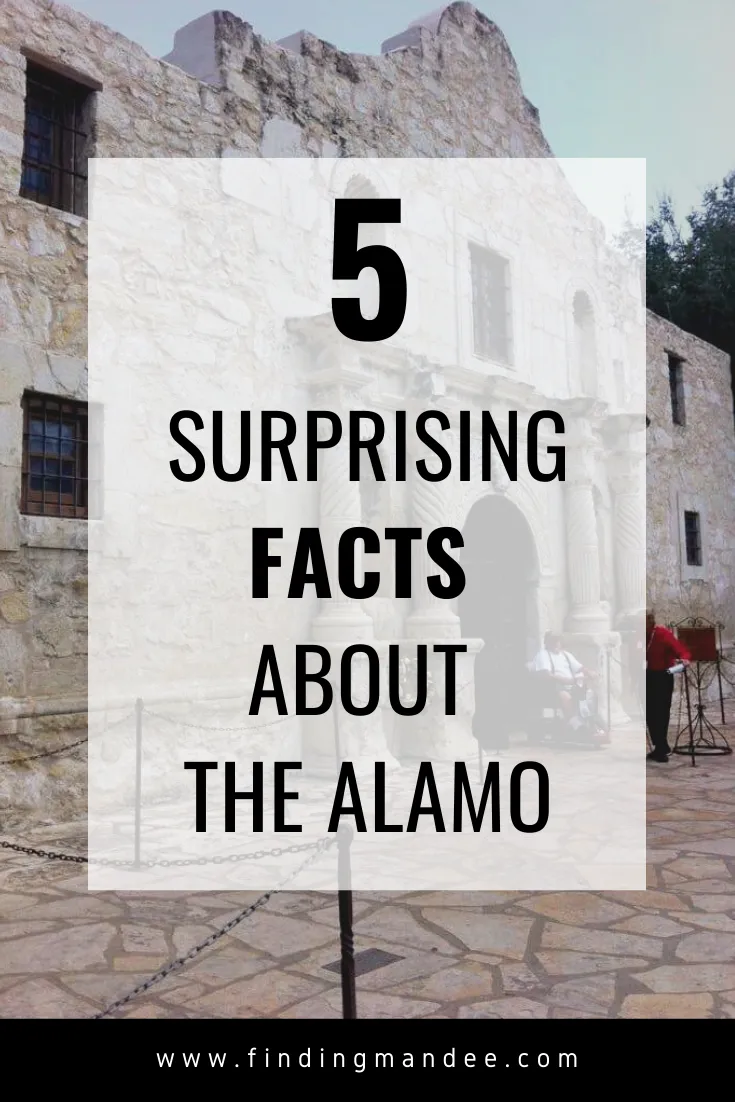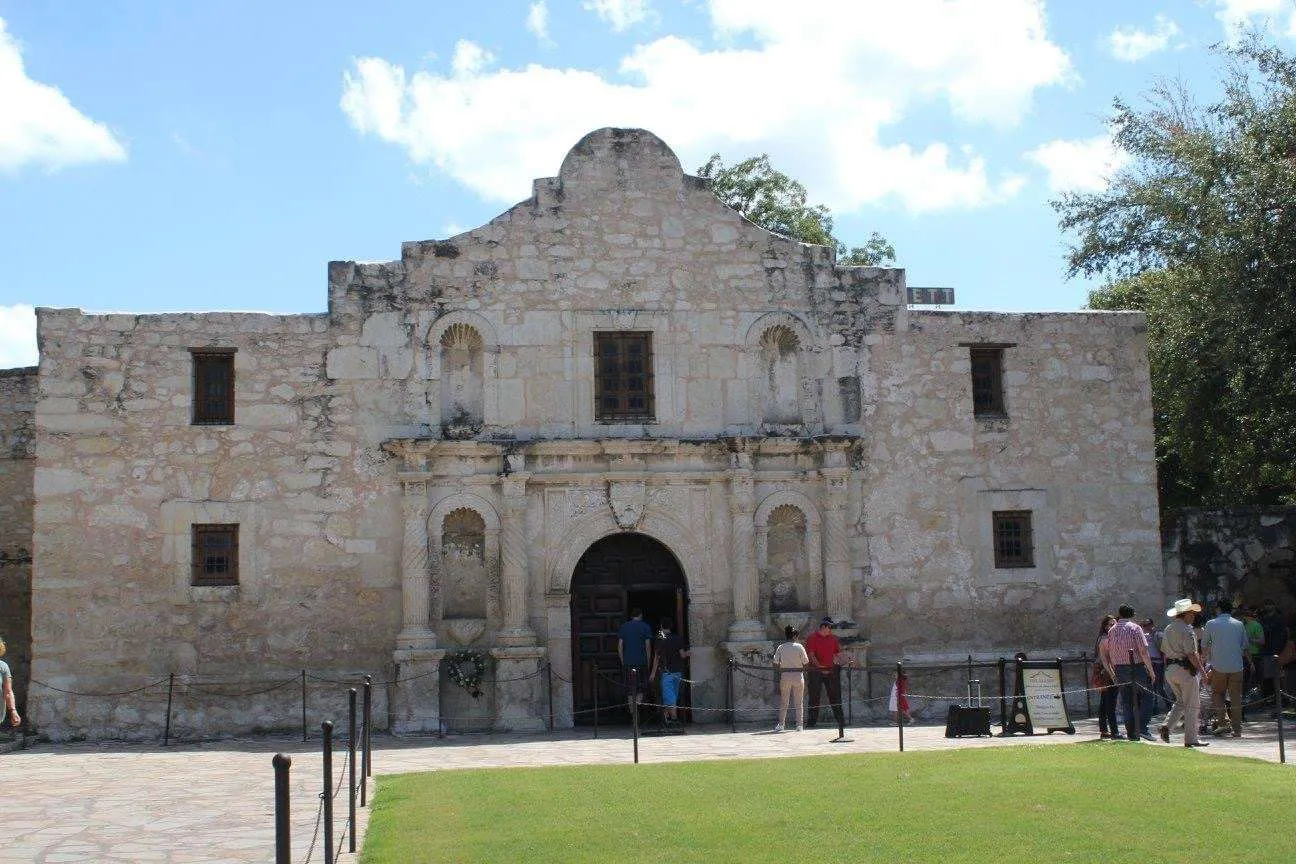
We have visited the famous Alamo in San Antonio several times. And with every visit, I learn more and more about its heartbreaking battle and defeat.
If you haven’t visited this historic American icon, add it to your Texas Bucket List now!
The courageous defenders of the Alamo will forever live on in the memories of Americans as the rebellious heroes that they were. They fought a battle they almost certainly knew that they would lose, but they believed in their cause so much that they were willing to fight and die for it. There is so much patriotism and nobility in that.
However, the story is not as simple as my high school history books made it seem.
Here are 5 surprising things I learned about the Alamo.

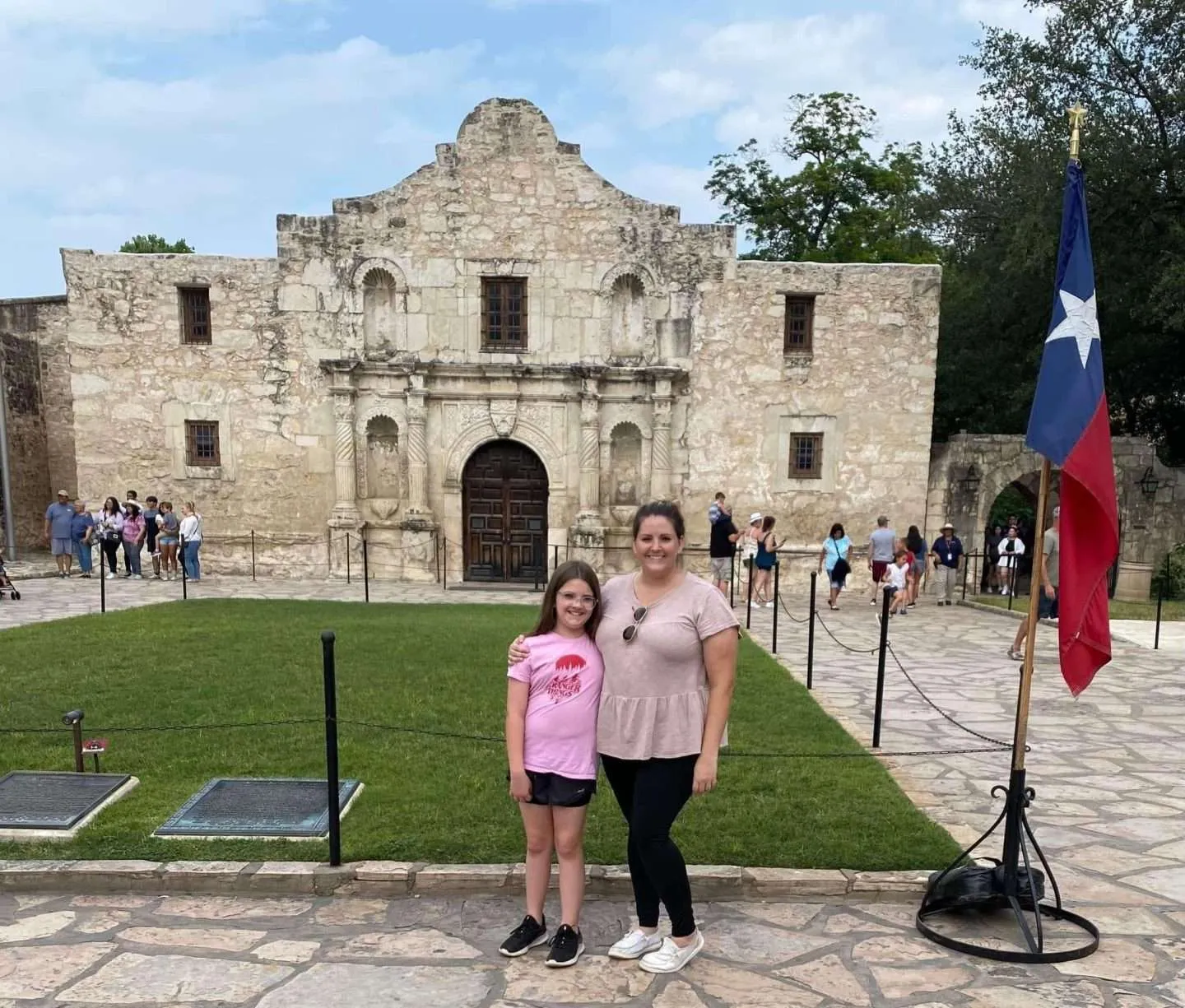
Alamo Means Cottonwood
This iconic site was built in 1718 by Spanish settlers and they named it the Mission San Antonio de Valero. For 70-ish years, the mission was a mostly peaceful home to missionaries and the Native Americans that they converted.
Eventually, 5 missions in the area, including the Mission San Antonio de Valero, were secularized by Spanish authorities. When Spanish troops moved into the chapel they began calling it ‘El Alamo’ after the Spanish word for cottonwood (álamo) since there was a grove of cottonwood trees surrounding the mission.
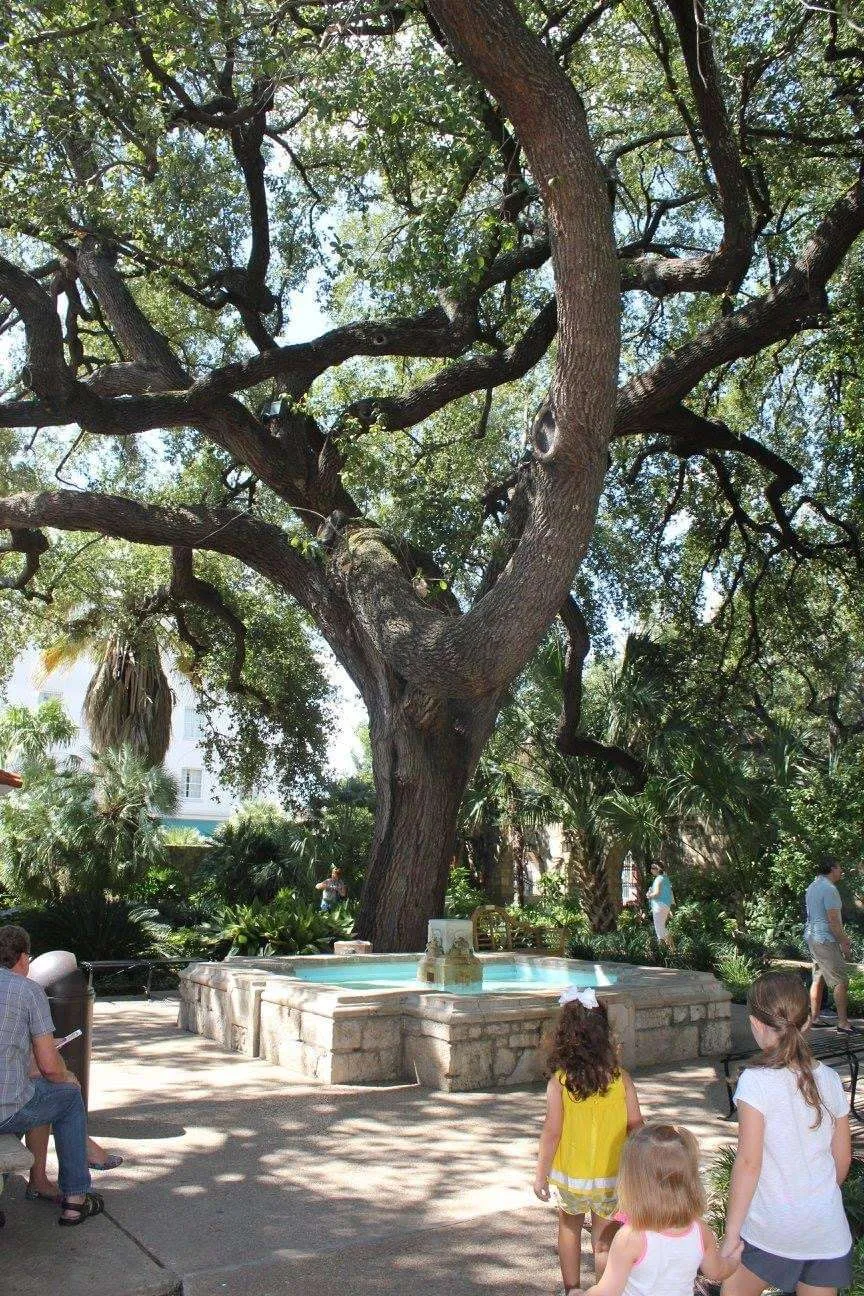

The Texans Were Supposed to Let the Alamo Go
By 1821 Mexico won their hard-fought independence from Spain and Mexican forces occupied the Alamo. However, Mexico’s peace was short-lived. By the 1830s Texas was in the early stages of fighting for its independence.
A group of Texans led by George Collinsworth and Benjamin Milam captured and took control of the Alamo in December of 1835. By February 1836 Colonel James Bowie and Lieutenant Colonel William B. Travis were commanding the Texan forces in San Antonio.
Sam Houston was the commander-in-chief of the Texan army and he ordered Bowie and Travis to abandon the mission. He didn’t believe that there were enough troops there to adequately defend it. And he was right.
Unfortunately, Bowie and Travis refused to accept his orders and dug in. They vowed to defend their fort until their last breath….and they did.
After a 13-day siege, the 200 defenders of the Alamo were defeated by Santa Anna’s Mexican army.
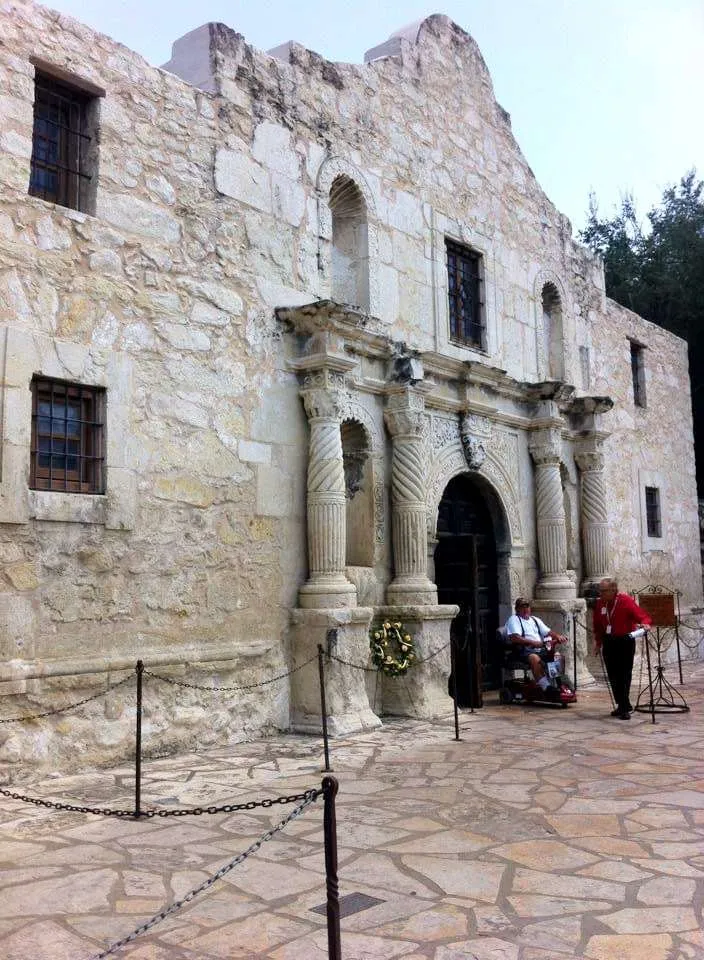
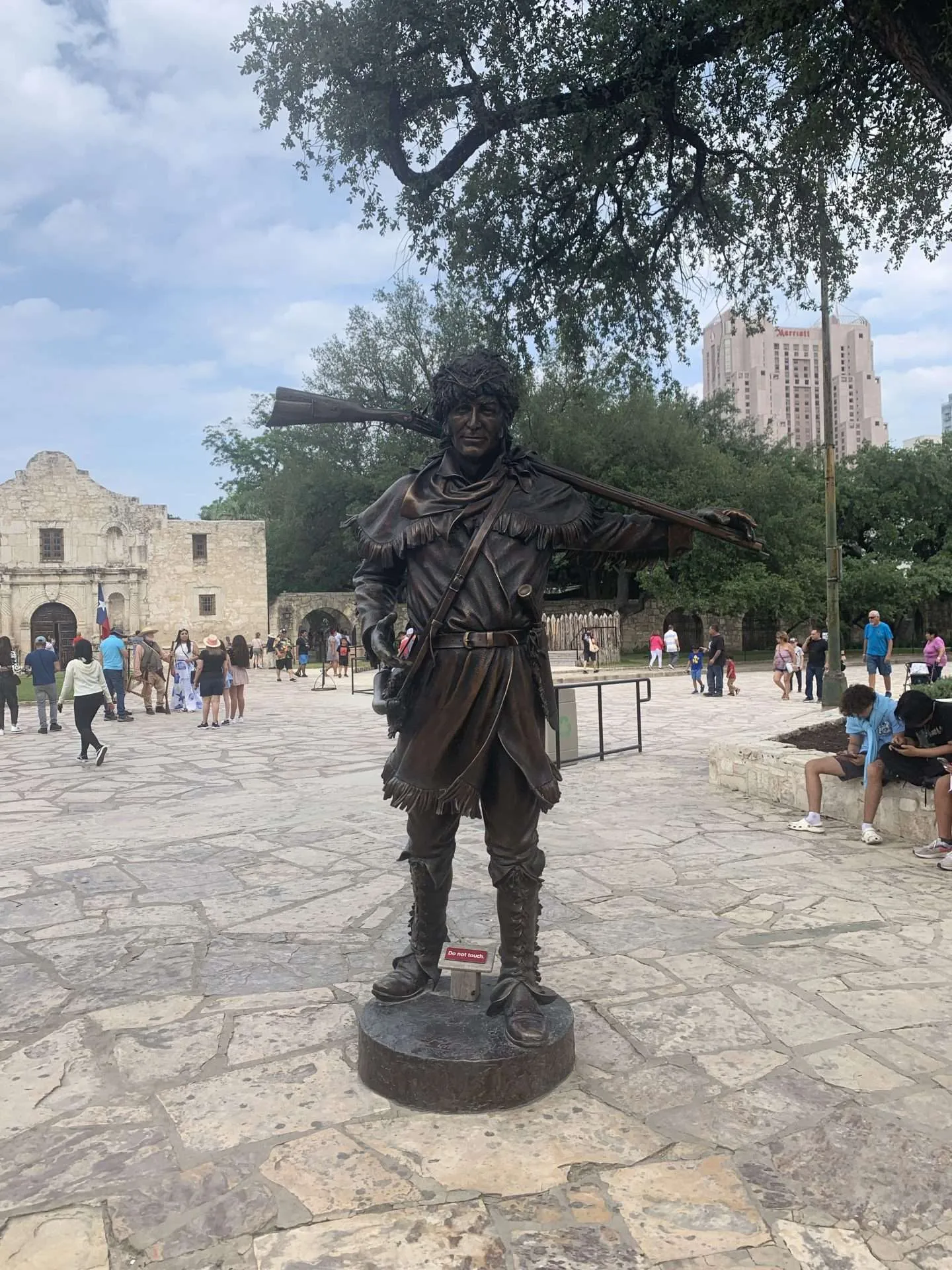
They Could Have Escaped
Santa Anna arrived in San Antonio in late February. The Texans saw the size of his army and retreated inside the well-fortified mission.
For a couple of days, Santa Anna didn’t try to block the exits of either the Alamo or the town of San Antonio. If they wanted to, the volunteers could have easily slipped away during the night. Bravely, they remained trusting their fortifications and praying that more Texans were on their way to help.
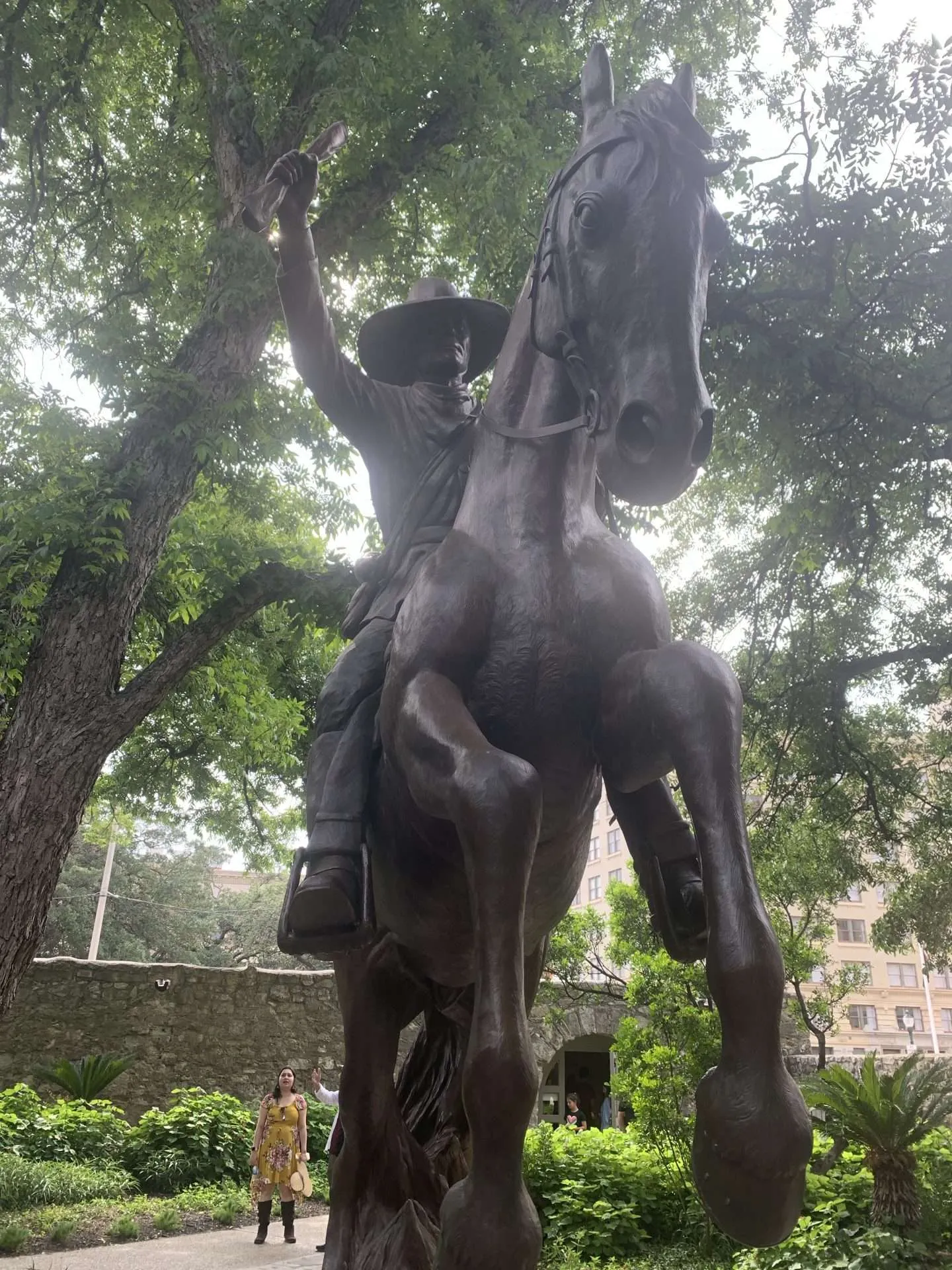
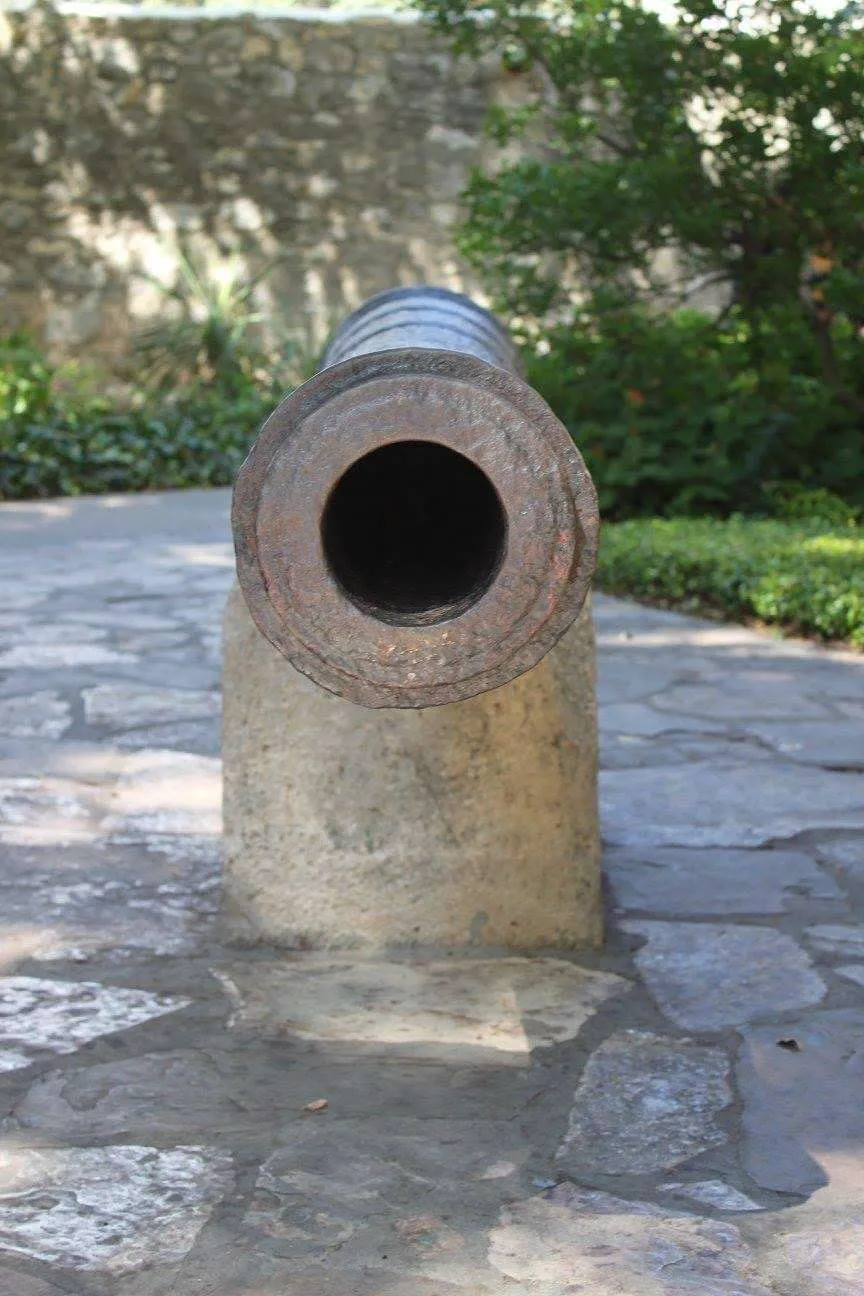
Some Men Snuck Into the Alamo
In fact, instead of running away from San Antonio where Santa Anna’s army was just waiting to pounce. 32 rebels snuck into the Alamo in the days before the attack.
32 brave men from the town of Gonzales made their way through enemy lines to volunteer their service at the Alamo. These men all died during the famous battle.

41 Europeans Fought Alongside the Texans
Today, when you enter the chapel of the mission, flags line some of the walls. Each flag represents the country or state that the 200 defenders of the Alamo called home before answering the call to fight for Texas.
Of course, there were flags from several American states, but I was surprised by the flags from other countries. 41 Europeans from Denmark, England, Germany, Ireland, and Scotland fought and died in the Battle of the Alamo.
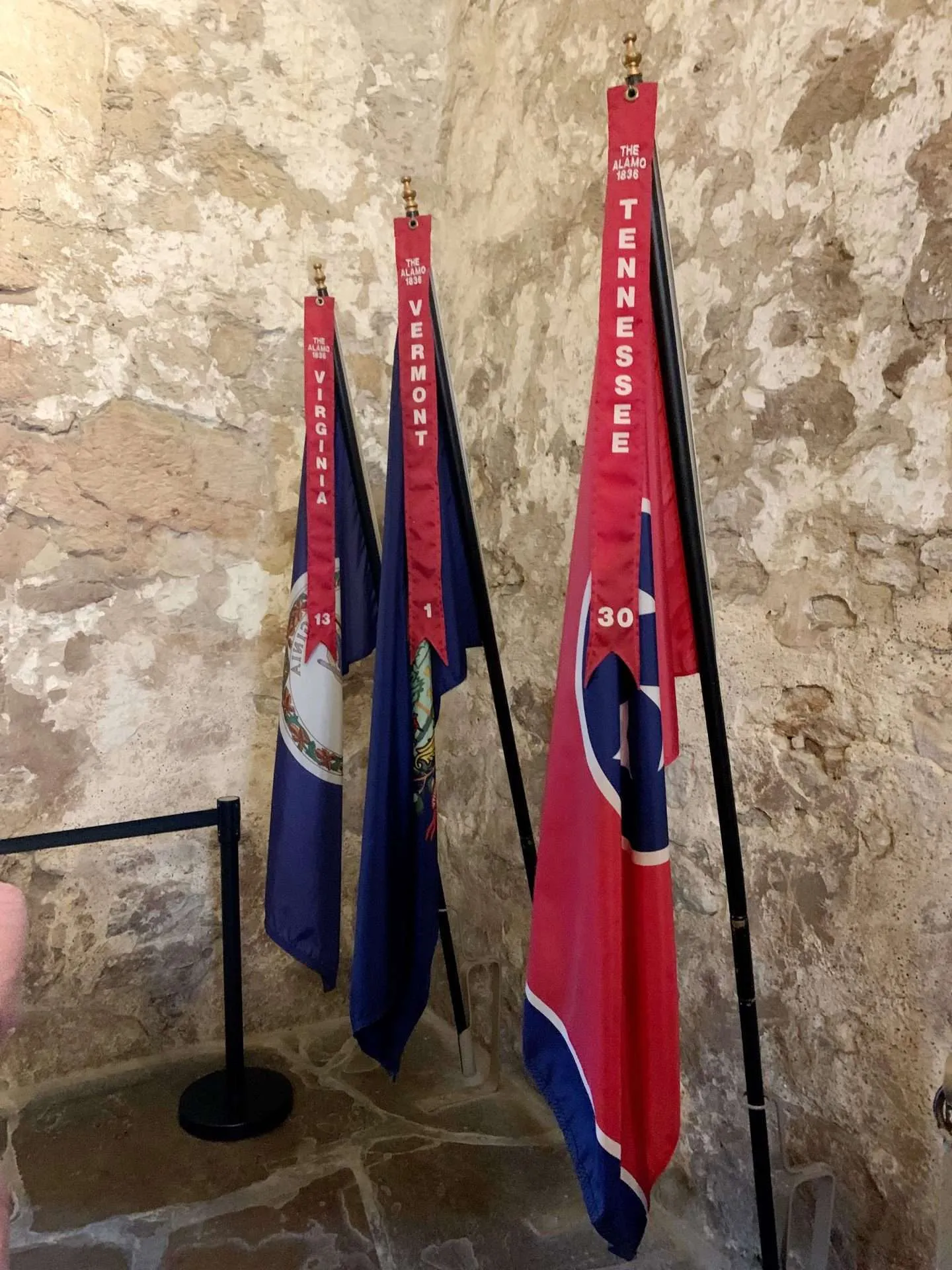

Every time we visit this historic site, we learn something new. So, even if you’ve been before, go again. It’s free and a great way to spend a few hours in San Antonio.
The Battle of the Alamo will forever be a battle cry, a symbol of rebellion, a reminder of true bravery, and an integral part of American history.
